Here’s a link to an article of mine that was recently published in the online magazine TABLET, describing my long relationship with classic SF writer Barry N. Malzberg — first as a fan of his fiction, then as a devotee of his essays, and finally as his friend.
Archive for Andrew
My Science Fiction Rabbi
Submission Guidelines for AGAIN, HAZARDOUS IMAGININGS
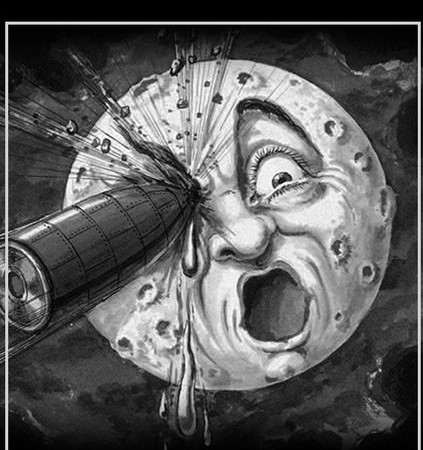
Now that my fundraising campaign on Freedomfy is over with and I know how much capital I have to work with, I’m free to post my submission guidelines for my upcoming open anthology, AGAIN, HAZARDOUS IMAGININGS: More Politically Incorrect Science Fiction. Due to the smaller-than-hoped-for funds available, I’ll be doing this open anthology as a companion volume to my single-author collection on the same theme, HAZARDOUS IMAGININGS: The Mondo Book of Politically Incorrect Science Fiction. My original plan had been to put out a single, really big volume, but since I’ll only be able to purchase about 30,000 words of original fiction from other writers, I figured two volumes would make more sense (otherwise, two-thirds of a sole book would be my fiction, which wasn’t what I intended).
Without further ado, here’s what I’m looking for–
Science fiction is often called “speculative fiction.” Speculation and extrapolation – asking what if? and why? or how? – is the life’s blood of science fiction. Science fiction writers can’t wrap themselves in yellow CAUTION tape. They need to be free to follow their what ifs? wherever those speculative rabbit-holes may lead… even if they lead to dark, dank, unpleasant places.
Recent controversies within the science fiction and pop culture fields illustrate a dramatic and worrisome reversal of what has traditionally been science fiction’s greatest strength: the freedom it has granted its creators to confront, extrapolate, and dissect technological and social trends, from a panoply of viewpoints, using a full arsenal of intellectual and literary tools. Writers who were once lionized as key contributors to the science fiction field are now being drummed out of the community by online zealots who stir up instant outrage mobs in hopes of “canceling” those voices who do not fall in line with the current progressive zeitgeist.
Science fiction should always make room for contrarians, for heretics, for the unfashionable and unpopular, for dreamers at the fringe. Without them, the centuries-long conversation at the heart of science fiction becomes a sterile echo chamber. Writers holding viewpoints from across the political spectrum must all feel welcome. In this era of accelerating technological and social change, we need a healthy, vigorous, daring and courageous science fiction, more than ever. One with no ideological handcuffs or defensive self-censoring.
Guidelines for AGAIN, HAZARDOUS IMAGININGS:
● Stories can be up to 7,000 words, maximum. (Although if the story is truly outstanding, I’m willing to be a bit flexible on word length.)
● Stories cannot have been previously published (this is an ORIGINAL anthology).
● No simultaneous submissions (I don’t want to get all hot-and-bothered about your wonderful story, only to learn it’s been sold to Clarkesworld Magazine).
● I intend for this anthology to serve as a cultural snapshot in time. With this in mind, shoot for the stars – submit your very best work, work you are proud of.
● I am looking for stories that, due to their content, viewpoint, and/or subject matter, have little or no chance of being published in the commercial market. Yesterday’s transgressions (those spotlighted in Dangerous Visions and Again, Dangerous Visions) are today’s cultural virtues and/or commonplaces. What are TODAY’S taboos? What kinds of science fiction stories are verboten in today’s commercial publishing market? What just won’t fly, whether due to shared social beliefs and aversions common to editors, assumptions that editors make about their readerships’ beliefs and aversions, or the commercial pressures of the corporate publishing world? How can these modern-day taboos be illuminated and explored using the unique extrapolative tools of science fiction?
● No troll submissions! I am looking for stories of high literary merit. No stories that merely (or primarily) seek to shock, insult, or provoke will be accepted. The subject matter may be outrageous by the standards of today’s marketplace. But keep in mind, the more outrageous or disturbing the material, the more incisively it needs to be explored using the cognitive tools of science fiction. Your story may be humorous or satirical; the subject matter may greatly benefit from that approach. But your goals should be to induce your readers to care about your characters, their conflicts, and their predicaments, to leave your readers with something memorable to think about, and, last but not least, to entertain.
● Use of a pseudonym is acceptable. You have my word that I will not reveal your true identity if you do not wish it to be revealed, and I will be happy to disguise your PII (Personally Identifiable Information) in any story introductions.
● Payment is $.03 (three cents) per word, payable upon acceptance.
● Submissions will be accepted through 12/31/2019. Email submissions to: fantasticalandrewfox Atsymbol gmail.com .
● Submissions should be in Microsoft Word format (.doc or .docx), Word Perfect format (.wp), or Rich Text format (.rtf), double-spaced with one-inch margins and a 12 point font.
● AGAIN, HAZARDOUS VISIONS will be published as both an ebook and a print-on-demand trade paperback by MonstraCity Press. It is anticipated the anthology will be about 50,000 words in length. It is being published as a companion volume to HAZARDOUS VISIONS: The Mondo Book of Politically Incorrect Science Fiction, which will be a collection of novellas and stories by Andrew Fox, author of Fat White Vampire Blues and The Good Humor Man, or, Calorie 3501.
New Story: “The Supreme Art of War”

Happy belated Fourth of July! For those of you who enjoy reading science fiction online, I’m pleased to be able to share a new story I’ve written, “The Supreme Art of War.” I wrote this piece as an entry for the Army’s Mad Scientist Initiative’s science fiction writing contest. The goal was to describe a conflict between the U.S. and a near-peer antagonist in 2030. My submission was selected by David Brin as one of the semi-finalists. The Small Wars Journal published it, along with other winners and entrants, online. I hope you enjoy!
Tech Glitch on Freedomfy Page Now Fixed
I’m not sure whether any of my readers here have attempted to donate to my Freedomfy fundraising campaign for my planned anthology, HAZARDOUS IMAGININGS; a technical glitch caused donations to not show on the page, so it appears I’ve collected a grand total of $0, although the administrators tell me that a bit more than $900 towards my $4,000 goal has come in. However, if you’ve tried to donate, you may have assumed the site wasn’t working and that your donation wasn’t going through. That part has been fixed, although my total raised hasn’t been updated yet. Still 23 days to go (they gave me an additional week, due to their feeling bad about the glitch). If you’d like to donate, or just check out the page and see what I have planned, here’s the link again:
https://www.freedomfy.com/projects/push-back-against-woke-science-fiction-support-the-hazardous-imaginings-anthology/
The campaign’s end has been extended from July 5 to July 12, 2019. Thanks for having a look! Since I’m close to $1000 in donations, if I go with a $.04/word rate of payment, I’ll be able to acquire about 25,000 words of original fiction at this point. I’d like to do better than that, if I can…
Is There a Need for an Independent Publisher-Scribes of America (IPSA)?
I thought I’d republish a recent FaceBook post here, in hopes of amassing a little more feedback on a notion I’ve been chewing over for a bit.
******************
I have a few questions for my FaceBook friends who are involved in independent/self-publishing or who are contemplating moving in that direction. Are you familiar with the Alliance of Independent Authors (ALLI), headquartered in London? Are you a member? If so, have you found their services to be of value? If you are a member, what types of services, support, or activities do you feel are lacking?
I’m asking because I’m contemplating launching an organization that would act as a kind of MeetUp for independent/self-publishers, allowing affinity groups to form that would facilitate socialization (writing, particularly when one is one’s own publisher, can be very isolating), mutual support and encouragement, the sharing of skills and experiences, pooling of resources to purchase services of mutual benefit, labor- and cost-sharing at venues like dealers’ rooms at conventions, the formation of marketing alliances, and new, fun, creative venues within which writers and readers can interact. I envision these self-organizing affinity groups, under an umbrella organization, serving as laboratories for innovation in independent/self-publishing. The umbrella organization could also facilitate juried awards in various categories to recognize and encourage excellence across the full range of independent/self-publishing endeavors — excellence in novels, short fiction, collections, and anthologies across the range of genres, in book design, and in innovations in marketing or in creating writer-reader interchanges. This would help steer readers through the intimidating and confounding mass of millions of self-published books put out each year.
I don’t want to compete with ALLI, and I don’t want to reinvent the wheel, either. Anything I’d try to start would be designed to be complementary to ALLI’s services and efforts.
This is very much at the very beginning, brainstorming stage. I’m hoping for a bit of feedback and to get a sense of whether there’s an appetite out there for this sort of thing.
For anyone who is curious, here’s a link to ALLI’s webpage.
Hollywood in Toto Interview Regarding HAZARDOUS IMAGININGS

Christian Toto, manager of the popular entertainment site Hollywood in Toto, published a lengthy interview with me regarding my HAZARDOUS IMAGININGS project, my efforts to push back against the closing of science fiction’s communal mind, the ups-and-downs of my writing career, and recent eruptions of “recreational outrage” on the Internet directed at science fiction writers who fail to hew precisely to the progressive, politically correct line of thought. Check it out!
Switching HAZARDOUS IMAGININGS Campaign to New Crowdfunding Platform Freedomfy

I’ve made the decision to switch my fund-raising campaign for HAZARDOUS IMAGININGS: The Mondo Book of Politically Incorrect Science Fiction from Kickstarter to a new crowdfunding platform called Freedomfy. I’m looking to raise $4,000.00 by July 5, 2019 to pay for 60,000 words of original, high-quality fiction that addresses today’s social, political, technological, and cultural taboos.
I think it’s extremely important for the health of our society to have a diversified social media and Internet infrastructure. None of us should be satisfied with our social media and Internet semi-monopolies of Facebook, Twitter, YouTube, and Google. That’s why when I heard about a brand-new crowdfunding platform, Freedomfy, I was intrigued and wanted to support them. Also, they expressed a great desire to fund creative projects but hadn’t yet had many sign up. Glancing through their catalog of funded projects, I didn’t see any books. I figured that “the early bird gets the worm” – anthologies might be par-for-the-course at Kickstarter (where I wasn’t making much headway), but at Freedomfy, a free-thinkers science fiction anthology might be both novel and very much welcomed. I’m excited to be a trailblazer for creative projects at Freedomfy. I hope that by being a pioneer, I can both encourage other producers of creative content to use the platform and help ensure that Freedomfy thrives as an alternative to the other crowdfunding sites.
HAZARDOUS IMAGININGS: The Mondo Book of Politically Incorrect Science Fiction is intended to help push open the closing Overton Window of what is acceptable to address in science fiction and fantasy. Science fiction’s strength has always been its practitioners’ flexibility of thought. The genre has traditionally provided its creators virtually limitless freedom to extrapolate trends to sometimes ludicrous or horrifying lengths, and to imagine the social, environmental, and psychological changes that might come about when what is impossible today becomes tomorrow’s reality.
Yet science fiction and the indispensable freedom it provides to thinkers to “stress test” the future face an existential threat. Today’s increasingly popular ideologies of intersectionality and “wokeness,” with their accompanying prohibition against the “sin” of cultural appropriation, have done much to smother the freedom of thought and expression science fiction requires to thrive.
Why do I want to get this anthology done? I love science fiction. I have loved the genre in all its forms since before I learned to read. I grew up on a steady diet of Robert Silverberg, Ursula K. Le Guin, Gene Wolfe, Vonda McIntyre, Anne McCaffrey, Barry N. Malzberg, and Harlan Ellison. Our society’s present-day drift towards censorship worries me enormously. I’m not speaking of censorship by the government. Rather, the censorship of which I speak is the de-platforming of unpopular ideas by media companies, commercial publishing, and internet content/social media providers. It is the encouragement of self-censorship by shaming mobs — practitioners of “recreational outrage” who take advantage of the new communication platforms, hoping to bully writers and creators into conforming to the mobs’ political and social notions by inciting fears of ostracism that will demolish any hope writers may have of remaining commercially viable in their chosen field.
Science fiction is often called “speculative fiction.” Speculation and extrapolation – asking what if? and why? or how? – is the life’s blood of science fiction. Science fiction writers can’t wrap themselves in yellow CAUTION tape. They need to be free to follow their what ifs? wherever those speculative rabbit-holes may lead… even if they lead to dark, dank, unpleasant places.
So I hope you’ll join me in re-opening science fiction’s closing Overton Window by donating to or helping spread the word about HAZARDOUS IMAGININGS: The Mondo Book of Politically Incorrect Science Fiction.
Buy THE GOOD HUMOR MAN Along With a Big Bundle of the Best in Sci-Fi Satire!
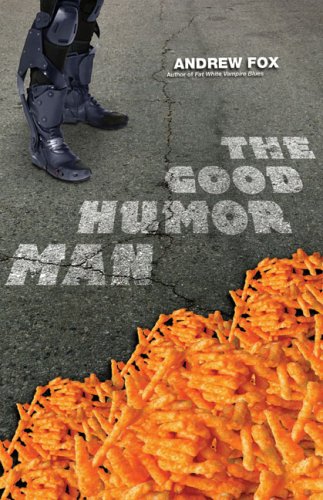
My 2009 satirical homage to Ray Bradbury’s FAHRENHEIT 451 — THE GOOD HUMOR MAN, OR, CALORIE 3501 — has been included as part of a science fiction and fantasy satire bundle from StoryBundle, along with novels from Thomas Disch, Terry Bisson, Lavie Tidhar, and the fantastic/classic Frederic Brown. Save lots of $$$ and buy a bunch of terrific books! Here’s a blog post from the publishers of THE GOOD HUMOR MAN, Tachyon Books. Check it out! But it’ll only be available through June 21, 2019, so hurry!
Kickstarter Page for HAZARDOUS IMAGININGS: The Mondo Book of Politically Incorrect Science Fiction
I’ve fully updated my Kickstarter project page for HAZARDOUS IMAGININGS: The Mondo Book of Politically Incorrect Science Fiction.
Here’s the link.

HAZARDOUS IMAGININGS Kickstarter Promo Movie
For those of you whose lives would not be complete without seeing me in full bondage regalia, wrapped up in yellow CAUTION tape like a mummy, here’s a promo movie I made for the HAZARDOUS IMAGININGS: The Mondo Book of Politically Incorrect Science Fiction Kickstarter Project. Also available on YouTube!
On a slightly more serious note, I talk about the state science fiction has found itself in, how the Overton Window of acceptable topics to speculate about and extrapolate has shrunken in recent years, and how I hope this project can help, in a small way, to unshackle science fiction writers from the strictures of both commercial taboos and defensive self-censorship.
Initial Version of Kickstarter Project, Changed Under Threat of Lawsuit from Ellison Estate
When I first put out word that I wanted to do a modern-day re-imagining of Harlan Ellison’s classic 1967 anthology of original science fiction, Dangerous Visions, a good and wise friend suggested that I keep a journal of my experiences, gently pointing out that I should expect “interesting times,” in the Chinese sense. Little did I know the “interesting times” would get so interesting, so fast!
My original notion for my Kickstarter project was a modern-day responsa to Dangerous Visions, a cultural milestone from the New Wave era of science fiction and a period of momentous change in American society. I thought the time was ripe, given the spread of call-out culture and de-platforming from the university/higher education sphere into popular culture — most definitely including science fiction and its conventional publishing imprints — to do The New Dangerous Visions, focusing on the taboos of today.
I wanted to be considerate of Susan Ellison’s, Harlan’s widow’s, feelings, so, in searching for a contact email, I reached out to her through a representative from one of the Ellison Estate’s organizations. I knew that titles do not fall under copyright, but I also knew the possibility existed that the Estate had trademarked “Dangerous Visions,” so I wanted to find that out, as well. Below is my exchange of messages with the Estate.
———————————————
Andrew Fox
Mon, Apr 22, 7:23 PM
to ellison.editor
Hello! I’m Andrew Fox, a sf, horror, and fantasy writer, good friend of Barry Malzberg’s, and a lifelong fan of Harlan’s. I’d like to reach Susan Ellison regarding an anthology I would like to edit in Harlan’s honor. Is this a good email address to use?
Best wishes,
Andrew Fox
———————————————
Harlan Ellison Book Preservation Project
Apr 22, 2019, 8:07 PM
to me
Andrew,
I’ll relay your proposal to Susan.
Be aware there’s already an Ellison tribute anthology available for pre-order from PS Publishing.
Director, Harlan Ellison Book Preservation Project
———————————————-
Andrew Fox
Apr 22, 2019, 8:54 PM
to Director, Harlan Ellison Book Preservation Project
Dear Director,
Thank you for reaching back to me, and thank you for letting me know that an official tribute volume to Harlan Ellison has been prepared; I’ll look forward to reading it. Actually, the anthology I have in mind is a bit different. Although it would serve, in part, as a tribute to Harlan’s irreplaceable work, it would be primarily a responsa to one of his most famous and enduring literary efforts. I’d like to do a modern-day version of DANGEROUS VISIONS, tentatively titled THE NEW DANGEROUS VISIONS. I’ve started gauging interest from possible contributors, including folks I know through my membership in SIGMA, the science fiction think tank. If I get at least half a dozen notable (or reasonably notable) folks to express interest in contributing, then I’ll raise funds to pay the contributors market rates through one of the crowd-funding platforms.
Here’s my precis…
“Fifty-two years ago, in 1967, writer and anthologist Harlan Ellison captured the attention of the science fiction community (as well as much of the larger literary community) with his publication of the largest original anthology of science fiction printed to that time, DANGEROUS VISIONS. Ellison solicited stories from both science fiction’s established roster of writers and from the most talented newcomers; several writers (including Samuel Delany) broke into the field with their submissions to DANGEROUS VISIONS and later attained lasting renown in the field. Ellison asked for submissions that couldn’t be printed in the science fiction magazines of the time, nor in other, conventional science fiction anthologies. He sought taboo-shattering stories, and he received them… stories that centered around incest, homosexuality, bisexuality, cross-species sex, women’s liberation, sadism, graphic violence, blasphemies against widely held religious beliefs, an all-pervasive welfare state, the moral limitations of capitalism, and the pervasiveness of bigotry. Five years later, in 1972, he followed up with an even larger, two-volume anthology of original works, AGAIN, DANGEROUS VISIONS. Ellison promised his readers a third and final anthology, THE LAST DANGEROUS VISIONS, but, despite soliciting and receiving dozens of submissions from major writers, he was never able to finish writing the thousands of words of story introductions and after words, and, despite repeated promises to fans and interviewers over the years, THE LAST DANGEROUS VISIONS remained incomplete and became the most famous/infamous work of science fiction never to be published. DANGEROUS VISIONS and AGAIN, DANGEROUS VISIONS have remained almost continuously in print over the succeeding decades and have come to be recognized not only as classic science fiction anthologies but as key cultural artifacts of the late 1960s and early 1970s, paradigmatic works of science fiction’s New Wave that reflected rapidly changing artistic, cultural, and social mores in the U.S. and the western world.
“In the decades since DANGEROUS VISIONS’s publication, what was originally taboo-breaking has become the common mental furniture of the science fiction field and much of the rest of the arts. Virtually none of the stories published five decades ago in either of these ground-breaking anthologies would be considered shocking or disturbing to most of the readership today. Yesterday’s transgressions are today’s cultural virtues and/or commonplaces. This poses a question: if DANGEROUS VISIONS were to be published today, with the same goal of seeking to present science fiction that cannot be published elsewhere, due to commercial and cultural barriers, what sorts of stories would it contain? What are TODAY’S taboos, and how do they relate to the taboos Harlan Ellison and his contributors confronted in 1968 and 1973? How can these modern-day taboos be illuminated and sharply delineated through fiction and productively extrapolated and explored using the unique tools of science fiction?
“THE NEW DANGEROUS VISIONS will seek to answer these questions and to play a similar role in the culture — the culture of science fiction as well as the overarching culture — that Harlan Ellison’s anthologies played five decades ago. Contributions will be sought from established science fiction writers, writers who have made their marks outside the science fiction field, and new writers — just as Ellison did with the original DANGEROUS VISIONS. The project will be initially funded through a crowd-sourcing platform, which will both raise money, establishing the financial viability of the project, and serve to publicize the project and help get the word out to potential contributors. Such contributors will be asked to submit, not merely their best work, but work which, due to its content, viewpoint, and subject matter, has little or no chance of being published elsewhere.”
I intend for this anthology to serve as a cultural snapshot in time, just as the original DANGEROUS VISIONS and its sequel volumes served. I think the culture can benefit from a new dose of DANGEROUS VISIONS every half-century or so, if only to provide signposts of where we’ve been and where we’re possibly heading as a society. One of the best ways to know a culture is to know what it fears, hates, and forbids.
In addition to being a longtime friend of Barry Malzberg’s, I was also a student and friend of George Alec Effinger’s in New Orleans. I learned many of my editing skills at George’s feet. I know that George and Harlan were close for many years before they drifted apart. I wanted to provide Susan the courtesy of making her aware of my plans before I sign up with a crowd-funding platform and she becomes aware of the anthology third-hand, so that she may offer her comments and input.
Thank you for passing this message along. I truly appreciate it.
Best wishes,
Andrew Fox
——————————————————
Weeks passed. I didn’t hear back from my correspondent from the Ellison Estate or any other representatives. So I went ahead and put up the following project description on Kickstarter.
——————————————————
THE NEW DANGEROUS VISIONS
An anthology of original science fiction. A re-imagining of the classic 1967 anthology. DANGEROUS VISIONS, exploring today’s taboos.

Fifty-two years ago, in 1967, writer and anthologist Harlan Ellison captured the attention of the science fiction community (as well as much of the larger literary community) with his publication of the largest original anthology of science fiction printed to that time, DANGEROUS VISIONS.
Ellison sought submissions that couldn’t be printed in the science fiction magazines or anthologies of the day. He asked for taboo-shattering stories. And he got them! The 32 stories included tales that explored the ramifications of incest, homosexuality, bisexuality, cross-species sex, women’s liberation, sadism, graphic violence, blasphemies against widely held religious beliefs, an all-pervasive welfare state, the moral limitations of capitalism, and the pervasiveness of bigotry. Some of science fiction’s most illustrious writers submitted pieces, including Ray Bradbury, Damon Knight, Philip K. Dick, and Theodore Sturgeon. But Ellison was especially eager to purchase stories from talented newcomers. Several writers who were later to become stars in their own right, including Samuel Delany and Gene Wolfe, broke into the field with their submissions to DANGEROUS VISIONS or its even larger sequel, the two-volume anthology AGAIN, DANGEROUS VISIONS, published in 1972.
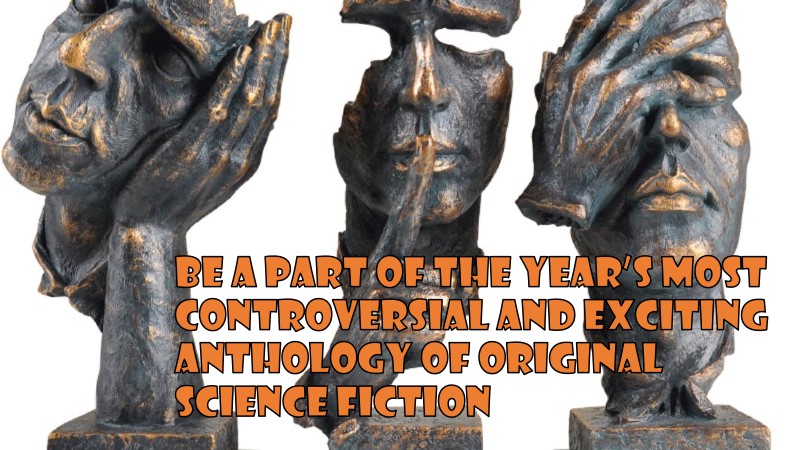
DANGEROUS VISIONS and AGAIN, DANGEROUS VISIONS have remained almost continuously in print since their original publication. Both have come to be recognized, not only as classic science fiction anthologies, but as key cultural artifacts of the late 1960s and early 1970s – paradigmatic works of science fiction’s New Wave that reflected rapidly changing artistic, cultural, and social mores in the U.S. and the Western world.
Five decades have passed since the emergence of that cultural milestone. It’s time to peer through that vertigo-inducing looking glass again. It’s time for THE NEW DANGEROUS VISIONS.
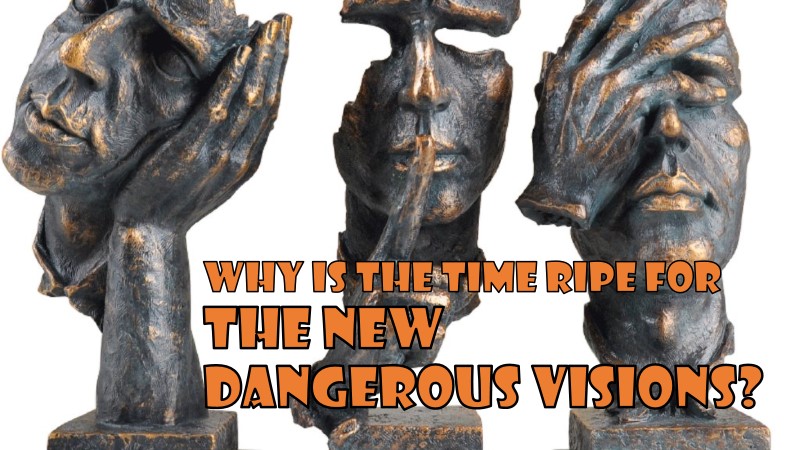
I believe one of the best ways to know a culture is to learn what it fears, hates, and forbids.
In the decades since DANGEROUS VISIONS’s publication, what was originally taboo-breaking has become the common mental furniture of the science fiction field and much of the rest of the arts. But this does not mean that new social prohibitions have not risen to take the place of old ones. What are TODAY’S taboos? What kinds of science fiction stories are verboten in today’s commercial publishing market? How can these modern-day taboos be illuminated and explored using the unique extrapolative tools of science fiction?
These are the questions THE NEW DANGEROUS VISIONS will seek to answer.

I’m Andrew Fox. I’m the author of the award-winning comic-horror novel, Fat White Vampire Blues (2003), and its sequel, Bride of the Fat White Vampire (2004). My third novel, The Good Humor Man, or, Calorie 3501 (2009), was selected by Booklist Magazine as one of the Ten Best Science Fiction and Fantasy Novels of the Year. I’m also a member of SIGMA, the science fiction think tank. I learned how to edit a story from being a part of George Alec Effinger’s writing workshop for fourteen years. My day job involves managing acquisitions of information systems. One of my biggest personal accomplishments was organizing one of the most successful citizen-led anti-violence campaigns in New Orleans’s history. After my cousin Amy Silberman was killed by celebratory gunfire on New Year’s Eve in 1994, I co-founded the New Year Coalition Against Holiday Gunfire. Over the next six years, the New Year Coalition’s public safety education campaign helped reduce annual injuries from New Year’s Eve gunfire from a dozen casualties or more to zero.
Why do I want to get this anthology done? Am I, a little-known writer who seeks to step into Harlan Ellison’s gigantic shoes, a narcissist and an attention-grabber? Well, uh, sure, there’s a little of that going on (gotta be honest here). But the main impetus for my wanting to see THE NEW DANGEROUS VISIONS come to fruition is that I have been an ardent fan of science fiction since before I learned to read. I grew up on a steady diet of Robert Silverberg, Ursula K. Le Guin, Gene Wolfe, Vonda McIntyre, Anne McCaffrey, Barry N. Malzberg, and Harlan Ellison. Our present-day drift towards censorship – not censorship by the government, but censorship of unpopular ideas by media companies, commercial publishing, and internet content/social media providers, and censorship through shaming mobs, and the self-censorship that comes from writers wanting to remain able to make a living in their chosen field – worries me greatly. Science fiction is often called “speculative fiction.” Speculation and extrapolation – asking what if? and why? or how? – is the life’s blood of science fiction. Science fiction writers can’t wrap themselves in yellow CAUTION tape. They need to be free to follow their what ifs? wherever those speculative rabbit-holes may lead… even if they lead to dark, dank, unpleasant places.
How many readers in Mary Shelley’s day wanted to read a tale in which Man abrogated the creative power of God? The existence of such a tale was a scandal in some quarters.
How many readers in H. G. Wells’s day wanted to read a tale in which the center of the world-spanning British Empire was itself colonized by invaders from another planet? The existence of such a tale was a scandal in some quarters.
How many readers in Philip Jose Farmer’s day wanted to read a collection of tales in which human beings engaged in sexual relations, not merely with persons of a different race or religion, but with members of bizarre alien species that had evolved light years distant from Earth? The existence of such tales was a scandal in some quarters.
How many readers during the glory days of the Apollo Program wanted to read a tale by Barry N. Malzberg that predicted bureaucratic dysfunction and its associated pathologies would cripple the U.S. manned space program (and drive astronauts insane)? The existence of such tales was a scandal in some quarters.
Yet each of these authors and their scandalous tales opened spaces for new viewpoints and fresh ways of thinking, pushing the great centuries-spanning conversation at the heart of science fiction forward.

I’ve lined up some contributors whose names are widely recognized in the science fiction field, including some who contributed to the original DANGEROUS VISIONS or AGAIN, DANGEROUS VISIONS or who pitched a story to one of those anthologies but didn’t manage to make the cut (but who went on to have noteworthy careers in science fiction or fantasy).
However, just as Harlan Ellison did, I’m primarily looking for talented beginners, those at the start of their writing careers or those whose work shows genuine literary skill but who have had a difficult time breaking into a contracting and commercially conservative publishing field. I’m also eager to feature strong work from those who have suffered “one-book-and-you’re-out” syndrome (those who’ve managed to get one book in print through a traditional publisher, but whose first-and-only book did not meet expectations, and therefore found themselves unable to follow up, since publishers no longer bother with gradually building up an author and his/her audience over time).
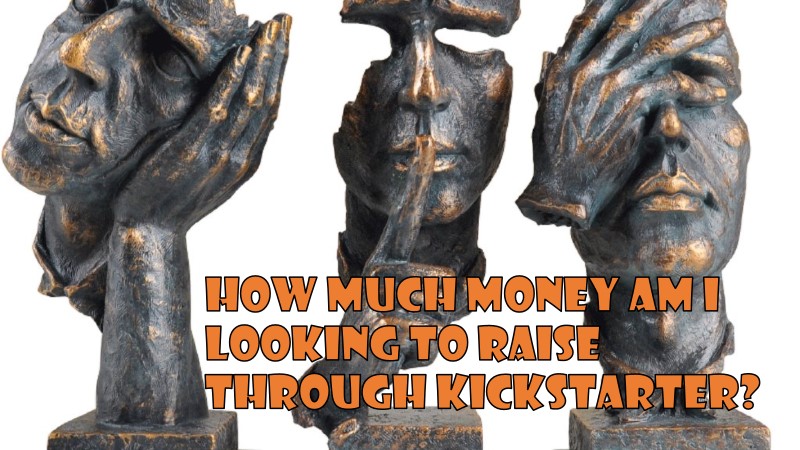
I intend to pay a professional rate, $.06 per word, for approximately 70,000 words of original fiction (not quite the size of the original DANGEROUS VISIONS, but hey, we all have to start somewhere!). To accommodate payments to contributors, book production costs (cover art, design, etc.), fees paid to Kickstarter, and the costs of premiums to be offered to donors, I aim to raise $7,000.00.
Should I exceed that amount, I will increase the maximum size of the collection accordingly, accepting more story submissions. Each additional $500.00 raised allows me to pay for an additional 8,000 words, which could be two 4,000-word stories added or an additional 6,000-word story and a 2,000-word short-short. Any funds raised beyond $8,500.00 will be put towards the publication of a second volume (which’ll be titled AGAIN, NEW DANGEROUS VISIONS – what else?). Raising at least $15,500.00 will guarantee the publication of both a first and a second volume.
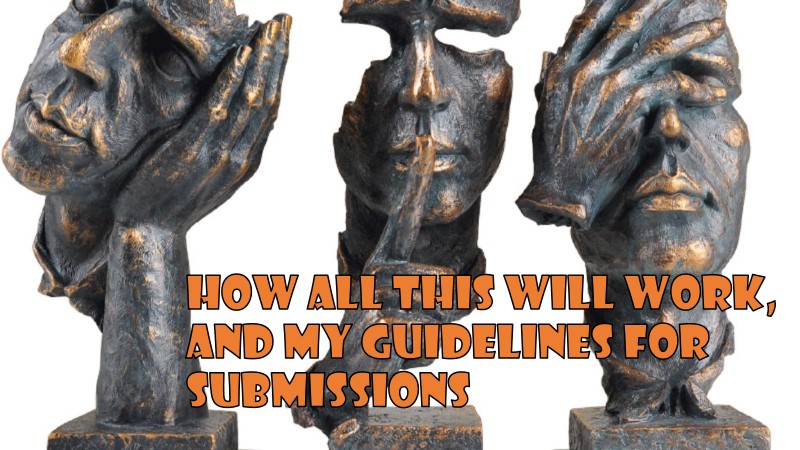
Kickstarter does not charge contributors unless and until the minimum fund-raising goal is met. This means that if you pledge $25, but the pledged total at the end of the fund-raising period only totals $3,762.33, you aren’t out a dime. Also, I don’t see a dime myself. I only have funds turned over to me by Kickstarter if my efforts manage to raise at least $6,500.00. Otherwise, it’s back to the drawing board.
Assuming I hit my mark, I will issue a call for submissions; it’ll appear here on the Kickstarter site, on my personal blog site, on the MonstraCity Press site, and will be shared with the popular online compilations of open fiction markets. Here are my provisional guidelines:
Stories can be up to 7,000 words, maximum.
Stories cannot have been previously published (this is an ORIGINAL anthology).
No simultaneous submissions (I don’t want to get all hot-and-bothered about your wonderful story, only to learn it’s been sold to Clarkesworld Magazine).
I intend for this anthology to serve as a cultural snapshot in time, just as the original DANGEROUS VISIONS and its sequel volumes served. (I think the culture can benefit from a new dose of DANGEROUS VISIONS every half-century or so.) With this in mind, shoot for the stars – submit your very best work, work you are proud of.
I am looking for stories that, due to their content, viewpoint, and/or subject matter, have little or no chance of being published in the commercial market. That means no retreads of themes or taboo/transgressive subject matter from the original DANGEROUS VISIONS or its sequel (unless you do something new, interesting, and subversive with that material, looking at the subject matter in a way that likely renders your story unmarketable). Virtually none of the stories published five decades ago in either of Ellison’s ground-breaking anthologies would be considered shocking or disturbing to most of the readership today. Yesterday’s transgressions are today’s cultural virtues and/or commonplaces. What are TODAY’S taboos? What kinds of science fiction stories are verboten in today’s commercial publishing market? What just won’t fly, whether due to shared social beliefs and aversions common to editors, assumptions that editors make about their readerships’ beliefs and aversions, or the commercial pressures of the corporate publishing world? How can these modern-day taboos be illuminated and explored using the unique extrapolative tools of science fiction?
No troll submissions! I am looking for stories of high literary merit. No stories that merely (or primarily) seek to shock, insult, or provoke will be accepted. The subject matter may be outrageous by the standards of today’s marketplace. But keep in mind, the more outrageous or disturbing the material, the more incisively it needs to be explored using the cognitive tools of science fiction. Your story may be humorous or satirical; the subject matter may greatly benefit from that approach. But your goals should be to induce your readers to care about your characters, their conflicts, and their predicaments, to leave your readers with something memorable to think about, and, last but not least, to entertain.
Use of a pseudonym is acceptable. You have my word that I will not reveal your true identity if you do not wish it to be revealed, and I will be happy to disguise your PII (Personally Identifiable Information) in any story introductions.
Please be aware that making a financial contribution to my Kickstarter campaign will NOT factor into my story selection decisions, if you intend to contribute both money and a story submission. Each story will be considered on its own merits.
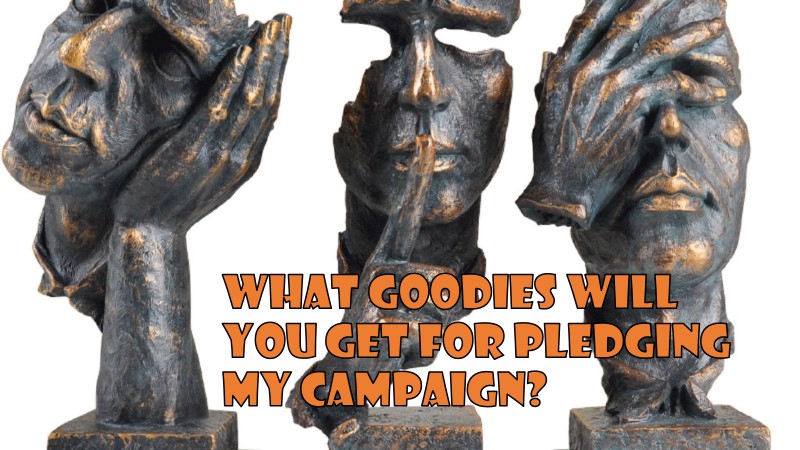
Pledge $5.00 to $9.99: You’ll receive
an ebook copy of THE NEW DANGEROUS VISIONS when it’s released.
Pledge $10.00 to $24.99: You’ll receive
an ebook copy of THE NEW DANGEROUS VISIONS when it’s released
and you’ll be listed as a Supporter in the book.
Pledge $25.00 to $39.99: You’ll receive
an ebook copy of THE NEW DANGEROUS VISIONS when it’s released
an ebook copy of Andrew Fox’s novel FAT WHITE VAMPIRE OTAKU
and you’ll be listed as a Donor in the book.
Pledge $40.00 to $44.99: You’ll receive
a trade paperback copy of THE NEW DANGEROUS VISIONS when it’s released (slight additional shipping fee will be applied)
and you’ll be listed as a Donor in the book.
Pledge $45.00 to $49.99: You’ll receive
a trade paperback copy and an ebook copy of THE NEW DANGEROUS VISIONS when it’s released (slight additional shipping fee will be applied)
and you’ll be listed as a Donor in the book.
Pledge $50.00 to $74.99: You’ll receive
a trade paperback copy and an ebook copy of THE NEW DANGEROUS VISIONS when it’s released (slight additional shipping fee will be applied)
an ebook of Andrew Fox’s novel FAT WHITE VAMPIRE OTAKU
and you’ll be listed as a Donor in the book.
OR
Pledge $50.00 to $74.99: You’ll receive
an ebook copy of THE NEW DANGEROUS VISIONS when it’s released
an ebook of Andrew Fox’s novel FAT WHITE VAMPIRE OTAKU
an ebook copy of Andrew Fox’s novel FIRE ON IRON
and you’ll be listed as a Donor in the book.
Pledge $75.00 to $99.99: You’ll receive
a trade paperback copy and an ebook copy of THE NEW DANGEROUS VISIONS when it’s released (slight additional shipping fee will be applied)
an ebook copy of Andrew Fox’s novel FAT WHITE VAMPIRE OTAKU
an ebook copy of Andrew Fox’s novel FIRE ON IRON
and you’ll be listed as a Donor in the book.
OR
Pledge $75.00 to $99.99: You’ll receive
an ebook copy of THE NEW DANGEROUS VISIONS when it’s released
an ebook copy of Andrew Fox’s novel FAT WHITE VAMPIRE OTAKU
an ebook copy of Andrew Fox’s novel FIRE ON IRON
an ebook copy of Andrew Fox’s novel THE GOOD HUMOR MAN, OR, CALORIE 3501
and you’ll be listed as a Donor in the book.
Pledge $100.00 to $124.99: You’ll receive
a trade paperback copy and an ebook copy of THE NEW DANGEROUS VISIONS when it’s released (slight additional shipping fee will be applied)
an ebook copy of Andrew Fox’s novel FAT WHITE VAMPIRE OTAKU
a signed trade paperback copy of Andrew Fox’s novel FIRE ON IRON
and you’ll be listed as a Patron in the book.
Pledge $125.00 to $149.99: You’ll receive
a trade paperback copy and an ebook copy of THE NEW DANGEROUS VISIONS when it’s released (slight additional shipping fee will be applied)
an ebook copy of Andrew Fox’s novel FAT WHITE VAMPIRE OTAKU
a signed trade paperback copy of Andrew Fox’s novel FIRE ON IRON
a signed trade paperback copy of Andrew Fox’s novel THE GOOD HUMOR MAN, OR, CALORIE 3501
and you’ll be listed as a Patron in the book.
Pledge $150.00 to $199.99: You’ll receive
a trade paperback copy and an ebook copy of THE NEW DANGEROUS VISIONS when it’s released (slight additional shipping fee will be applied)
an ebook copy of Andrew Fox’s novel FAT WHITE VAMPIRE OTAKU
a signed trade paperback copy of Andrew Fox’s novel FIRE ON IRON
a signed trade paperback copy of Andrew Fox’s novel THE GOOD HUMOR MAN, OR, CALORIE 3501
a signed trade paperback copy of Andrew Fox’s novel BRIDE OF THE FAT WHITE VAMPIRE
and you’ll be listed as a Patron in the book.
Pledge $200.00 to $249.99: You’ll receive
a trade paperback copy and an ebook copy of THE NEW DANGEROUS VISIONS when it’s released (slight additional shipping fee will be applied)
an ebook copy of Andrew Fox’s novel FAT WHITE VAMPIRE OTAKU
a signed trade paperback copy of Andrew Fox’s novel FIRE ON IRON
a signed trade paperback copy of Andrew Fox’s novel THE GOOD HUMOR MAN, OR, CALORIE 3501
a signed trade paperback copy of Andrew Fox’s novel BRIDE OF THE FAT WHITE VAMPIRE
a signed trade paperback copy of Andrew Fox’s novel FAT WHITE VAMPIRE BLUES
and you’ll be listed as a Sponsor in the book.
Pledge $250.00 to $499.99: You’ll receive
a trade paperback copy and an ebook copy of THE NEW DANGEROUS VISIONS when it’s released (slight additional shipping fee will be applied)
an ebook copy of Andrew Fox’s novel FAT WHITE VAMPIRE OTAKU
a signed trade paperback copy of Andrew Fox’s novel FIRE ON IRON
a signed trade paperback copy of Andrew Fox’s novel THE GOOD HUMOR MAN, OR, CALORIE 3501
a signed trade paperback copy of Andrew Fox’s novel BRIDE OF THE FAT WHITE VAMPIRE
a signed trade paperback copy of Andrew Fox’s novel FAT WHITE VAMPIRE BLUES
you’ll be listed as a Sponsor in the book
and a character in one of the anthology’s stories will be given your name (or the name of your choice).
Pledge $500.00 to $999.99: You’ll receive
a trade paperback copy and an ebook copy of THE NEW DANGEROUS VISIONS when it’s released (slight additional shipping fee will be applied)
an ebook copy of Andrew Fox’s novel FAT WHITE VAMPIRE OTAKU
a signed trade paperback copy of Andrew Fox’s novel FIRE ON IRON
a signed trade paperback copy of Andrew Fox’s novel THE GOOD HUMOR MAN, OR, CALORIE 3501
a signed trade paperback copy of Andrew Fox’s novel BRIDE OF THE FAT WHITE VAMPIRE
a signed trade paperback copy of Andrew Fox’s novel FAT WHITE VAMPIRE BLUES
you’ll be listed as a Sponsor in the book
a character in one of the anthology’s stories will be given your name (or the name of your choice)
and you will be invited to join editor Andrew Fox at lunch or dinner in conjunction with a Mid-Atlantic-area science fiction convention.
Pledge $1,000.00 to $1,499.99: You’ll receive
a trade paperback copy and an ebook copy of THE NEW DANGEROUS VISIONS when it’s released (slight additional shipping fee will be applied)
an ebook copy of Andrew Fox’s novel FAT WHITE VAMPIRE OTAKU
a signed trade paperback copy of Andrew Fox’s novel FIRE ON IRON
a signed trade paperback copy of Andrew Fox’s novel THE GOOD HUMOR MAN, OR, CALORIE 3501
a signed trade paperback copy of Andrew Fox’s novel BRIDE OF THE FAT WHITE VAMPIRE
a signed trade paperback copy of Andrew Fox’s novel FAT WHITE VAMPIRE BLUES
you’ll be listed as a Super-Patron in the book
a character in one of the anthology’s stories will be given your name (or the name of your choice)
ü you will be invited to join editor Andrew Fox at lunch or dinner in conjunction with a Mid-Atlantic-area science fiction convention
and Andrew Fox will provide a professional editorial appraisal of a short story written by the donor (up to 10,000 words).
Pledge $1,500.00 to $1,999.99: You’ll receive
a trade paperback copy and an ebook copy of THE NEW DANGEROUS VISIONS when it’s released (slight additional shipping fee will be applied)
an ebook copy of Andrew Fox’s novel FAT WHITE VAMPIRE OTAKU
a signed trade paperback copy of Andrew Fox’s novel FIRE ON IRON
a signed trade paperback copy of Andrew Fox’s novel THE GOOD HUMOR MAN, OR, CALORIE 3501
a signed trade paperback copy of Andrew Fox’s novel BRIDE OF THE FAT WHITE VAMPIRE
a signed trade paperback copy of Andrew Fox’s novel FAT WHITE VAMPIRE BLUES
you’ll be listed as a Super-Patron in the book
a character in one of the anthology’s stories will be given your name (or the name of your choice)
you will be invited to join editor Andrew Fox at lunch or dinner in conjunction with a Mid-Atlantic-area science fiction convention
and Andrew Fox will provide a professional editorial appraisal of a novel-length manuscript written by the donor (up to 125,000 words).
Pledge $2,000.00 to $2,499.99: You’ll receive
a trade paperback copy and an ebook copy of THE NEW DANGEROUS VISIONS when it’s released (slight additional shipping fee will be applied)
an ebook copy of Andrew Fox’s novel FAT WHITE VAMPIRE OTAKU
a signed trade paperback copy of Andrew Fox’s novel FIRE ON IRON
a signed trade paperback copy of Andrew Fox’s novel THE GOOD HUMOR MAN, OR, CALORIE 3501
a signed trade paperback copy of Andrew Fox’s novel BRIDE OF THE FAT WHITE VAMPIRE
a signed trade paperback copy of Andrew Fox’s novel FAT WHITE VAMPIRE BLUES
you’ll be listed as a Super-Patron in the book
a character in one of the anthology’s stories will be given your name (or the name of your choice)
you will be invited to join editor Andrew Fox at lunch or dinner in conjunction with a Mid-Atlantic-area science fiction convention
Andrew Fox will provide your choice of a professional editorial appraisal of a short story written by the donor (up to 10,000 words) or a professional editorial appraisal of a novel-length manuscript written by the donor (up to 125,000 words)
and you’ll receive a SIGNED vintage MS-DOS laptop computer, used by Andrew Fox to write one of his novels, with multiple drafts of the author’s novels FAT WHITE VAMPIRE BLUES and BRIDE OF THE FAT WHITE VAMPIRE on the hard drive.
Pledge $2,500.00 or more: You’ll receive
a trade paperback copy and an ebook copy of THE NEW DANGEROUS VISIONS when it’s released (slight additional shipping fee will be applied)
an ebook copy of Andrew Fox’s novel FAT WHITE VAMPIRE OTAKU
a signed trade paperback copy of Andrew Fox’s novel FIRE ON IRON
a signed trade paperback copy of Andrew Fox’s novel THE GOOD HUMOR MAN, OR, CALORIE 3501
a signed trade paperback copy of Andrew Fox’s novel BRIDE OF THE FAT WHITE VAMPIRE
a signed trade paperback copy of Andrew Fox’s novel FAT WHITE VAMPIRE BLUES
you’ll be listed as a Super-Patron in the book
a character in one of the anthology’s stories will be given your name (or the name of your choice)
you will be invited to join editor Andrew Fox at lunch or dinner in conjunction with a Mid-Atlantic-area science fiction convention
Andrew Fox will provide your choice of a professional editorial appraisal of a short story written by the donor (up to 10,000 words) or a professional editorial appraisal of a novel-length manuscript written by the donor (up to 125,000 words)
you’ll receive a SIGNED vintage MS-DOS laptop computer, used by Andrew Fox to write one of his novels, with multiple drafts of the author’s novels FAT WHITE VAMPIRE BLUES and BRIDE OF THE FAT WHITE VAMPIRE on the hard drive
and THE LAST DANGEROUS VISIONS will be dedicated to you (or to a relative or friend of your choice).

I believe in this project. I think it is an important thing to do, important for science fiction, which I love, and important for the continued health of the free-speech culture we enjoy in the United States.
I believe in this project strongly enough that I’m willing to put my own money where my mouth (or touch typing) is. If I don’t get funded through Kickstarter, THE NEW DANGEROUS VISIONS will still be published through MonstraCity Press. I’ll have to reduce the word rate I can offer, unfortunately, and I’ll probably have to limit the amount of fiction I’ll be able to pay for. But I can promise that THE NEW DANGEROUS VISIONS will see the light of day, regardless. And any profit I’m fortunate enough to make from the first volume will then get dedicated to a second, larger volume (perhaps to be successfully funded through a new crowd-funding campaign).
Science fiction will always make room, make room (h/t: Harry Harrison) for contrarians, for heretics, for the unfashionable and unpopular, for the ugly, for outcasts, for stubborn failures who won’t say die, for dreamers at the fringe. Without them, the centuries-long conversation at the heart of science fiction – Idea A being built upon by Idea B being refuted by Idea C that is then modified by Idea D – becomes a sterile echo chamber. And should that happen, science fiction – written science fiction, the fecund seed from which all other modes of science fiction sprout – will ultimately suffer the sad fate of poetry, declining from a mass medium that once spoke to the minds and hearts of large audiences to a withered stump, of interest only to a shrunken circle of its writers and practitioners and a few academics, an inward-looking, incestuous community characterized by log-rolling, desperate status-seeking, ideological nepotism, obscurantism, and futility.
In this era of accelerating technological change and resultant social change, we need a healthy, vigorous, daring and courageous science fiction more than ever. To point out the possible perils up ahead. To point out future opportunities most of us may never otherwise have imagined. To get us to examine our thinking, to revisit our assumptions, to rearrange our mental furniture. To enable us to meet the onrushing future, not blindly, not with an anticipatory cringe or defensive cower, but with our eyes wide open… braced for the worst, but filled with reasoned hope for much, much better to come.
Risks and challenges
The primary risk is that if I don’t hit my funding target of $7,000, I won’t be able to pay a professional rate of $.06/word, and I probably won’t be able to buy 70,000 words of original fiction. However, I am personally committed to this project. If I miss my Kickstarter goal and receive no funding through Kickstarter, I will still solicit original stories, but at a sub-professional word rate, and I will most likely purchase less original fiction. In the latter case, I will be less able to attract submissions from veteran professional writers. However, I anticipate being able to make up this shortfall with submissions from talented newcomers.
—————————————————————————-
The day after I launched the Kickstarter project, I received the following email from my correspondent with the Ellison Estate:
—————————————————————————-
Director
May 17, 2019, 2:18 PM
to me
Mr. Fox,
While the press of urgent business has not allowed us to reply to your last message, silence does not imply consent.
Know that both “Harlan Ellison” and “Dangerous Visions” are registered trademarks of The Kilimanjaro Corporation. ANY unauthorized use of either constitutes trademark infringement under 15 U.S. Code §1114.
Revise your Kickstarter to remove ALL references to “Harlan Ellison” and “Dangerous Visions,” or The Kilimanjaro Corporation will take the necessary legal action.
XXXXX XXXXXXXX
Project Director, The Kilimanjaro Corporation
——————————————————————————
I’d guestimate that email took all of two minutes to write. Why the gentleman from The Kilimanjaro Corporation didn’t respond to my April 22 8:07 PM email with similar promptness as he responded to my April 22 7:23 PM email is anyone’s guess. All it would have taken is an even shorter note to the effect of, “Dangerous Visions is a registered trademark of The Kilimanjaro Corporation; we would appreciate it if you would select a different title for your project,” and I would have honored that request then and there.
A trademark’s a trademark. I get it. I’ll comply.
However, what I don’t get is trademarking the name “Harlan Ellison”. Harlan Ellison was a major figure in science fiction and in American literary, film, and TV culture for upwards of sixty years. Does the Estate plan to try to control, through legal action, all discussion of Ellison’s work and legacy, whether online or in print? I could understand the Estate wanting to put a halt to unauthorized marketing and sales of Harlan Ellison Corn Flakes, or, more on-point, Harlan Ellison Underwood Typewriter Replicas or Harlan Ellison Anti-Anger Herbal Remedy. But trying to squelch any mention of “Harlan Ellison” in conjunction with a planned anthology that will exist primarily as a responsa to Ellison’s most important work, a milestone in science fiction’s development?
That I don’t get. It is as if the Estate wants to see Harlan Ellison gradually fade into undeserved obscurity. Because if they keep up their heavy-handed efforts to control all discussion of and creative engagement with the legacy of the late author, in twenty years’ time, no one under the age of 70, with the exception of a few obsessive bibliophiles, will have ever heard of Harlan Ellison. And I think that will be a shame.
Homeys on Film — CAPTAIN AMERICA: CIVIL WAR (2016)
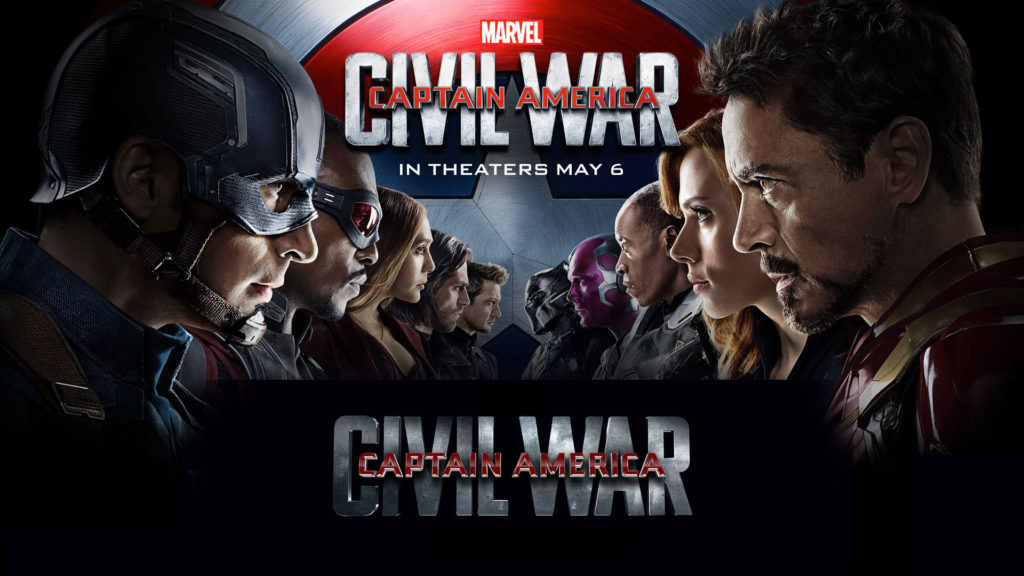
Copyright Marvel Studios
Welcome back to another thrilling episode of Homeys on Film: Homeland Security Lessons From Bad Movies! It’s superhero-on-superhero mayhem! Smash! POW! Ka-BOOM! And, if you look hard enough through the smoke, CGI, spandex, and prosthetic muscles, there are lessons galore for homeland security wonks.
Synopsis

Primo Cap villain and all-around badass Crossbones (copyright Marvel Studios)
In Lagos, Nigeria, a new team of Avengers, led by Captain America (Chris Evans), battles a team of Hydra mercenaries led by Brock Rumlow, also known as Crossbones (Frank Grillo). Crossbones and his team are after a sample of a lethal, highly contagious virus. Trying to evade capture, Crossbones triggers a massive explosion, which is diverted at the last second by the hex powers of the Scarlet Witch (Elisabeth Olsen). Unfortunately, she doesn’t divert it quite high enough, and its force obliterates the seventh story of a neighboring hotel, killing eleven and injuring dozens.
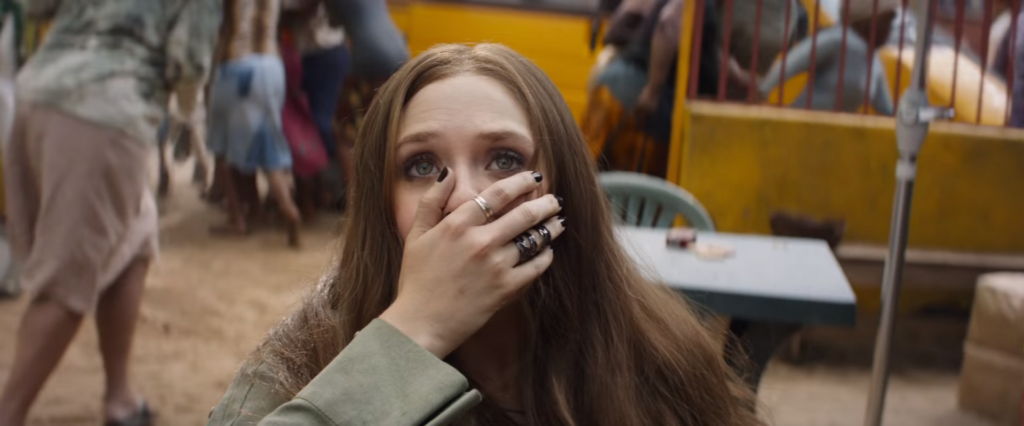
Watch where you’re aiming that hex!!! (copyright Marvel Studios)
Whoops. Not good for the ol’ Avengers PR, especially since their most recent mission, taking down genocidal robot Ultron, incidentally resulted in the devastation of a small Eastern European country (Sokovia — socked by the Avengers, get it?).
Secretary of State Thaddeus Ross (William Hurt) curtly informs the Avengers that their days as freelance world-savers are Over with a capital O. The United Nations General Assembly (taking a break from officially condemning Israel) has ratified by overwhelming majority the Sokovia Accords, which places the Avengers’ operations under the supervision and control of a U.N. panel. Ross tells the Avengers that if they don’t sign on to the accord in Vienna three days hence, they will be forced into retirement (which would be really, really bad news for Disney).
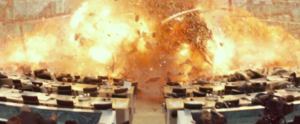
Things are really BOOMING at the U.N. (copyright Marvel Studios)
The debate among the Avengers on how to respond to the U.N. reveals a deep fissure between members of the team, with Iron Man (Robert Downey Jr., everyone’s favorite arms salesman to the U.S. military) strongly favoring signing onto the Sokovia Accords and Captain America (champion of liberty, apple pie, and Betty Grable pinups) equally vehemently opposed. Matters don’t get any easier in Vienna. King T’Chaka (John Kani), whose African nation, Wakanda, lost several citizens in the Lagos tragedy, takes the podium for a speech in favor of the Accords, only to be killed when a bomb detonates outside the building. Huge bummer for Captain America — security video shows the man who detonated the bomb was Cap’s old WW2 buddy, Bucky Barnes, now known as the Winter Soldier (Sebastian Stan), who has been under the control of nefarious forces since the Cold War. Cap and his fellow Avenger, the Black Widow (Scarlett Johansson) realize they must track down Bucky before a German military task force, who have orders to shoot to kill, find him.
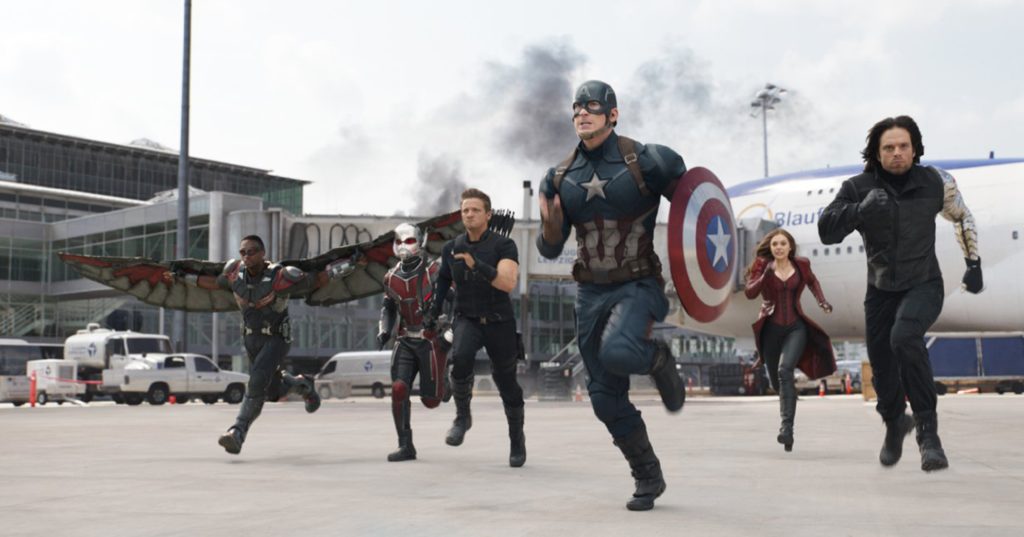
Team Cap! My team is red-hot, your team ain’t doodley-squat! (copyright Marvel Studios)
Cap’s and the Widow’s efforts to protect Bucky (who has been framed) lead to conflict with the Black Panther (Chadwick Boseman), son of the slain King T’Chaka, and with various Avengers. The villainous Colonel Zemo (Daniel Brühl) is revealed as the mastermind who has used Bucky’s Soviet-implanted code word to revert him to remote control. Captain America assembles a covert team composed of the Falcon (Anthony Mackie), the Scarlet Witch, Ant-Man (Paul Rudd), and Hawkeye (Jeremy Renner) to free Bucky from Zemo’s influence and to stop the evil colonel’s plot to activate a number of Soviet-era super-soldier sleeper agents and send them against his enemies.

Kid Spider-Man proves his worth (copyright Marvel Studios)
However, since Cap and company have apparently gone off the reservation, Iron Man assembles his own Avengers team to take them down. His allies include Black Panther, Black Widow, War Machine (Don Cheadle), the Vision (Paul Bettany), and a teenaged newcomer, Spider-Man (Tom Holland). Audiences get the big, BIG fight they’ve paid their money for. Lil’ itty-bitty Ant-Man surprises everyone by transforming into humongous, king-sized Giant-Man, giving Captain America and Bucky space to flee to an airplane hanger and continue to pursue Zemo. Wet-behind-the-ears Spider-Man proves his worth by bringing down the suddenly formidable Giant-Man with his webs. However, tragedy ensues when the Vision, trying to take down the Falcon with his solar eye beams, instead hits his ally War Machine, knocking him from the sky and severely injuring him.
Iron Man views evidence that indicates that Bucky was framed for the Vienna explosion. He rockets off to Siberia to assist Captain America and Bucky with their foiling of Zemo’s plans. But Zemo’s greatest, most diabolical plot is yet to unfold. At an abandoned Soviet-era military base in Siberia, Zemo shows Iron Man/Tony Stark old video footage of the Winter Soldier, under Soviet mind control, assassinating Tony Stark’s parents, Howard and Maria Stark. Furthermore, it turns out that Captain America was aware of at least aspects of the assassination and never revealed this to his good friend, Iron Man.
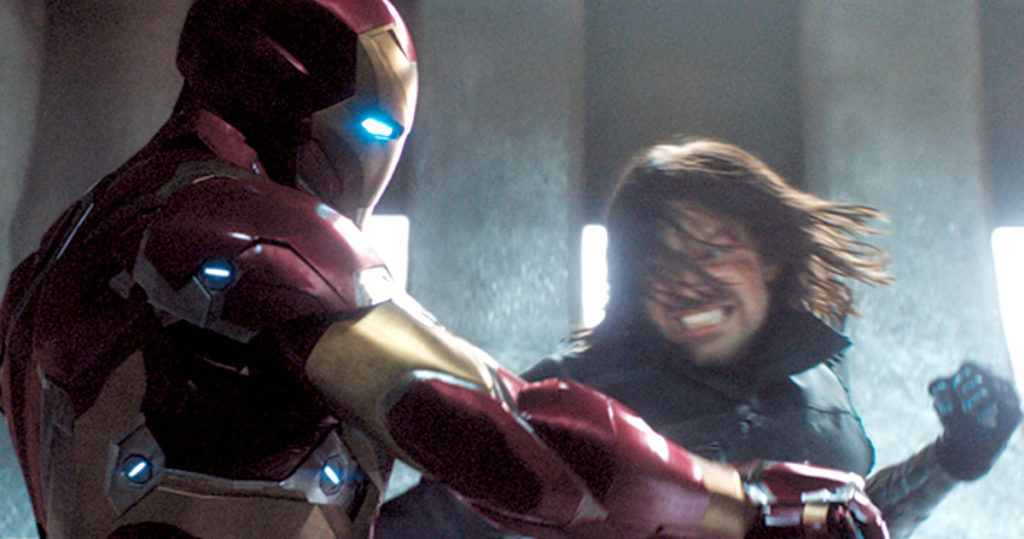
Iron Man and the Winter Soldier throw down! (copyright Marvel Studios)
In a blind rage, Iron Man attacks Bucky and Captain America. He manages to rip off Bucky’s cyborg arm, but Captain America uses his indestructible shield to disable Iron Man’s armor. Cap and Bucky take off. Zemo is apprehended by the Black Panther, who has overheard him confess his responsibility for the explosion that killed King T’Chaka. The reason behind all the scheming? Zemo lost family members in the Avengers’ war against Ultron in Sokovia, resulting in his vow to destroy the Avengers from within.
The former Avengers who fought beside Captain America against Iron Man’s team have been imprisoned on the Raft, a mid-ocean, floating super-jail. Captain America breaks them out, and the renegade heroes head for sanctuary in Wakanda, the Black Panther’s highly advanced African nation, where the Black Panther, now king, vows to find a cure for Bucky’s susceptibility to mind control. Iron Man and Spider-Man start a bromance. We see a teaser for the next Avengers movie. THE END.
Homeland Security Lesson #1: Kinetic operations against non-state combatants in densely-populated urban environments risk political and public relations harm to the more responsible, law-abiding side.

When mutant hexes go awry… (copyright Marvel Studios)
What gets all the trouble rolling for the Avengers? Their efforts to prevent Crossbones and his Hydra mercenaries from stealing a deadly virus accidentally result in a score of deaths and injuries in Lagos. This unintentional and highly-regretted event (despite the fact that the Avengers’ apprehension of Crossbones likely prevented the deaths of tens thousands from maliciously spread disease) brings the heavy hand of the United Nations down on the Avengers. Both the United States and Israel have experienced this same dynamic at work when their armed forces have pursued terrorists or insurgents in heavily populated urban areas. The enemies of both nations have used civilians as human shields. The U.S. and Israeli militaries have both exercised considerable care to avoid civilian deaths, the latter taking the trouble to telephone individual Gazan Palestinians, who were living in apartment buildings being used by Hamas as weapons depots, prior to Israeli missiles being launched against those structures. However, the fog of war, technical malfunctions, and enemy action have frequently resulted in unintended civilian deaths, for which the U.S. and Israeli armed forces, expected by many to be able to use force with exacting precision, have been unjustly blamed.
Homeland Security Lesson #2: Be aware of the potential for blow-back.

Bye-bye, Sokovia, we hardly knew ye… (copyright Marvel Studios)
The Avengers, in Avengers: Age of Ultron, did not set out with the intention of devastating the small nation of Sokovia; they meant only to save all humanity from the machinations of Utron. Ultron’s actions (levitating Sokovia’s largest city to use as an asteroid weapon to strike Earth and cause a planetary catastrophe which would end all human life, freeing up the planet for robots) led to the destruction of Sokovia and the deaths of many of its citizens, but because the Avengers failed to save them, they were labeled the malefactors by some. One of those bitter Sokovians turned out to be Colonel Zemo, who manages in the current movie to pull off the unlikely hat trick of disrupting and disbanding the Avengers (see Lesson #3 below). Similarly, the successful efforts of the U.S. in the 1980s to arm and train the transnational Islamic mujahideen, whose members included Osama bin Laden, to fight the Soviets in Afghanistan arguably helped lead to the militarization and radicalization of a whole generation of Muslims, many of whom disliked the U.S. as much as they did the Soviet Union. Our efforts helped push the Russians out of Afghanistan and definitely helped weaken the Soviet Union, but they also helped create new cadres of transnational terrorists.
Homeland Security Lesson #3: Beware false-flag operations.
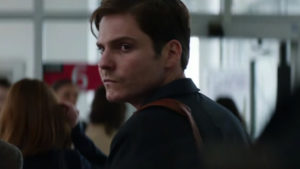
Nefariously clever revenge-seeking evil dude Colonel Zemo (copyright Marvel Studios)
Colonel Zemo, with no super-powers of his own, is able to do something no other villain (not even the supremely powerful Loki) has been able to pull off — smashing the Avengers. He does it not by physically overpowering any of them, but by using deception and psychological tricks to pit them against one another. Some commentators on the War on Terror have come to the conclusion that the greatest harm al-Qaeda has been able to inflict upon the United States has been its complicity in pulling the U.S. into decade-long wars in Afghanistan and Iraq, causing the U.S. to expend a trillion dollars and lose thousands of its soldiers and Marines. None of the 9/11 plotters were either Afghans or Iraqis. However, by holding secret meeting with Iraqi government figures and by taking refuge within Afghanistan, al-Qaeda and Osama bin Laden were able to implicate those two governments in their terror activities, enough so to convince the Bush Administration that first the Taliban and later Saddam Hussein needed to be removed from power.
Homeland Security Lesson #4: Sometimes an enemy’s innovation can only be defeated by an innovation of our own.
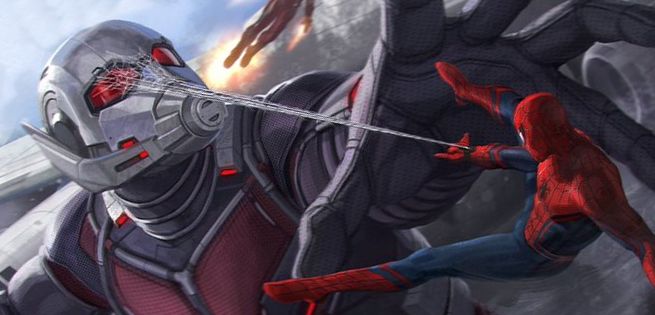
Ant-Man becomes Giant-Man but is trumped by Spider-Man (copyright Marvel Studios)
Ant-Man’s surprising transformation into Giant-Man nearly turned the tide of battle against Iron Man’s squad. But Iron Man’s team regained the initiative when Spider-Man, a previously unknown quantity, used his web-shooters in a new fashion, winding his webs around Giant-Man’s legs and causing the colossus to topple over onto his face, knocking him out of the fight. Similarly, in Iraq, the insurgents’ innovation of powerful improvised explosive devices (IEDs) caused significant casualties among American troops, who often convoyed in unarmored Humvees. U.S. casualties were radically reduced by the innovation, first carried out by U.S. servicemen acting on their own, and later improved upon by defense contractors, of armoring the undersides of light Army and Marine transport vehicles against roadside bombs. In the same fashion, al-Qaeda’s innovation of using jet airliners as suicide bombs was defeated by a pair of American innovations — the willingness of the passengers on Flight 93 to sacrifice themselves to prevent the terrorists from taking full control of the plane, and the institution of armored cockpit doors on all passenger aircraft.
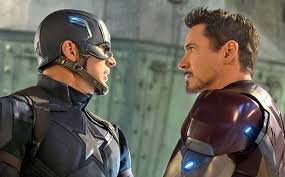
Superhero stare-down (copyright Marvel Studios)
Homeys on Film: Homeland Security Lessons from Bad Movies
Plan 9 From Outer Space (1959)
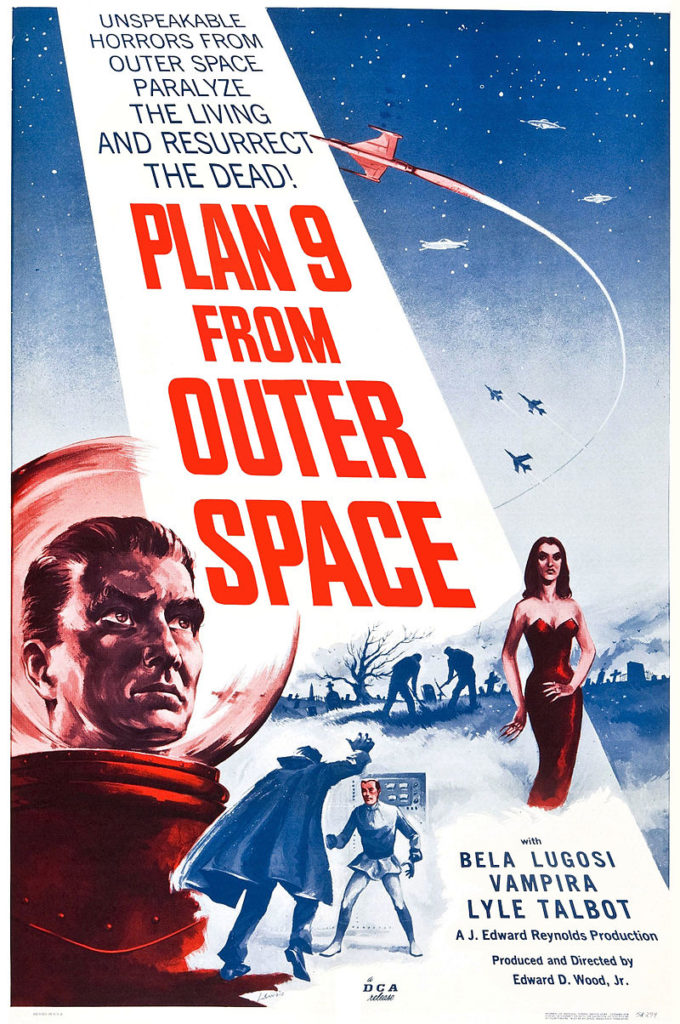
Synopsis:
Film critics Harry and Michael Medved awarded Plan 9 From Outer Space the trophy for “worst movie ever made” in their 1980 book The Golden Turkey Awards (a well-thumbed copy of which sits upon my bookshelf). But anyone with an eye (just one) and a heart can’t honestly classify Plan 9 as a bad film. It belongs to another category entirely — a goobad film, a film so bad it is hilariously good. The primary entertainment value comes from the unintentionally campy performances, the over-the-top script, and the lower-than-low budget production values (watch the cardboard gravestones sway back and forth when the actors scurry by! It’s day! It’s night! No, it’s day again! See the pie tin flying saucer set on fire, then flung across the screen on a string!) And the inclusion of famous-for-never-being-right psychic Criswell as the movie’s host was a grace note which gave the film an otherworldly, surreal gravitas seldom achieved by films at this production level.
Our story begins with an old man (Bela Lugosi, in his posthumous final screen appearance — he’d died three years before, just after shooting some test footage with director Ed Wood, who likely wrote Plan 9 in order to capitalize on his few feet of precious, but soundless, Lugosi footage… see the wonderful film Ed Wood for more details) at his wife’s graveside, mourning her death. There’s a sudden shift to the cockpit of an airplane piloted by the redoubtable Jeff (Gregory Walcott), our hero (the cockpit “set” is little more than a pair of chairs for pilot and copilot and a chintzy curtain which supposedly separates the cockpit from the rest of the plane), which is forced off course by the swift passage of what appears to be a flying saucer. The saucer lands in the graveyard, where its occupants resurrect the old man’s deceased wife (Vampira/Maila Nurmi) as a radio-controlled zombie and sic her on the grave diggers, who die a horrible death (off camera). Back to the old man’s house, we see him wandering out in the road in a befuddled daze, where he is hit by a car (again, off camera). At his funeral, one of the mourners discovers the bodies of the murdered grave diggers (repeat after me… off camera), and the police are called in. The law is represented by Inspector Clay (professional wrestler Tor Johnson) and Lieutenant Harper (Duke Moore). This is the only scene in which Inspector Clay speaks, probably a good choice on Ed Wood’s part, since English dialogue was not Swede Tor Johnson’s strong point as an actor. Clay goes off on his own to investigate the graveyard.
Pilot Jeff is chatting with his wife Paula on their patio about the flying saucer which buzzed his airplane, complaining that the Army has sworn him to secrecy, when another saucer, or perhaps the same one, does a low flyover, knocking the surprised couple out of their chairs. Meanwhile, back in the graveyard, Inspector Clay comes upon the deceased old man (no longer played by Bela Lugosi, but rather by a lightly disguised chiropractor friend of Ed Wood’s) and his equally deceased wife, who menacingly surround him. His gunfire is loud but ineffective, and he collapses within the chiropractor’s black cape, never to be seen in human form again.
Matters come to a head. Three flying saucers are seen flying over (stock footage of) Hollywood, then Washington, DC. The Army decides to make a stand, but their missiles fail to hit the saucers, which appear to be protected by some kind of force field (and the fact that distant smoke puffs are easier and cheaper to simulate than impressive explosions). The commanding general mentions to a subordinate that the saucers have destroyed a small town and have not responded to attempts at radio communications. We transition to the command room of the lead saucer, where Eros (Dudley Manlove) and his second in command, Tanna (Joanna Lee), confer with their Ruler (John Breckinridge), informing him that they have decided to go with Plan 9, the resurrection of the dead (we never learn what Plans 1-8 were or how they got screwed up). Eros and Tanna, the William Powell and Myrna Loy of extraterrestrial invaders, get the green light from the Ruler (who, to judge from his tone of voice, really couldn’t give a damn). Jeff goes off on another flight, leaving Paula alone in their home. She is soon menaced by the zombie old man and chased through the cemetery, where zombie Vampira and zombie Clay join the chase. She faints just outside the graveyard and is rescued by a local farmer.
The Army belatedly manages to translate Eros’s earlier transmissions, which began as friendly greetings but later degraded into frustrated, bitchy warnings about Earthlings’ warlike ways. Back on the saucer, the Ruler decides it is time for decisive action, so he commands Eros to send the old man zombie on a kamikaze mission to overawe the Earthlings. The old man zombie attacks a police officer, but before he can kill him, Eros remotely fires a disintegration ray, and the old man zombie crumples into a skeleton before the police officer’s stunned eyes.
The aliens prepare for their upcoming confrontation with the Earthmen. Jeff and an Army officer locate the saucer parked in the graveyard. Eros, feeling the need to soliloquize, opens up the saucer’s hatch and lets the two Earthmen enter. When Jeff tries to get manly with his gun, Eros turns on the viewing screen, which shows zombie Clay carrying an unconscious Paula through the cemetery. Eros has his Lady Macbeth moment, expounding at length on the history of humanity’s weapons development and climaxing in a prediction that, should their progress remain unimpeded, humans will inevitably develop solorbonite, an unstoppable weapon which will destroy the entire universe by exploding all rays from the sun and other stars. Because humans are “stupid, stupid!“, they must be destroyed before they can manage to create and test solorbonite. Out in the graveyard, a police officer manages to brain zombie Clay with a two-by-four, rescuing Paula, which frees Jeff to go into hero mode. He shoots up Eros’s equipment, starting a fire aboard the saucer. Eros and Tanna take off, the saucer becomes an inferno (well, actually a pie tin set on fire with a Bic lighter), it explodes (sort of), Criswell intones a brief eulogy, THE END.
Homeland Security Lesson #1: Guns Aren’t Toys (or Pointers, or Forehead Scratchers)
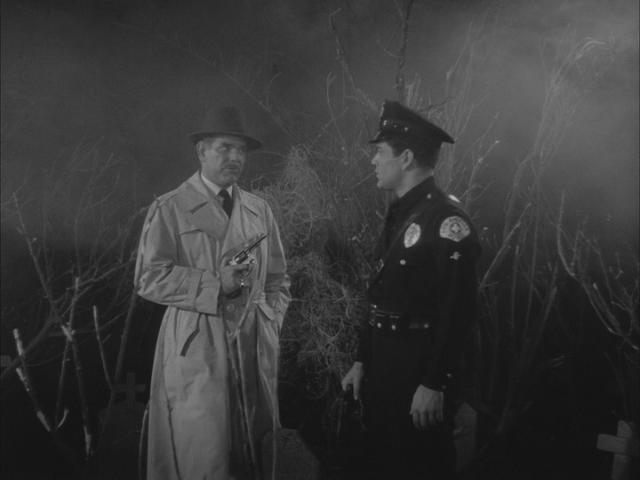
One might be forgiven for thinking a reminder of this sort wouldn’t be necessary, at least not for homeland security professionals. However, throughout Plan 9 From Outer Space, we are treated to the chuckle-worthy spectacle of Lieutenant Harper gesticulating wildly with his service revolver, using it to point at his coworkers and civilians, and, perhaps most egregiously, using its barrel to scratch his forehead while his finger is on the trigger (one involuntary jerk of his index finger and “hello” drain bamage… err, brain damage).
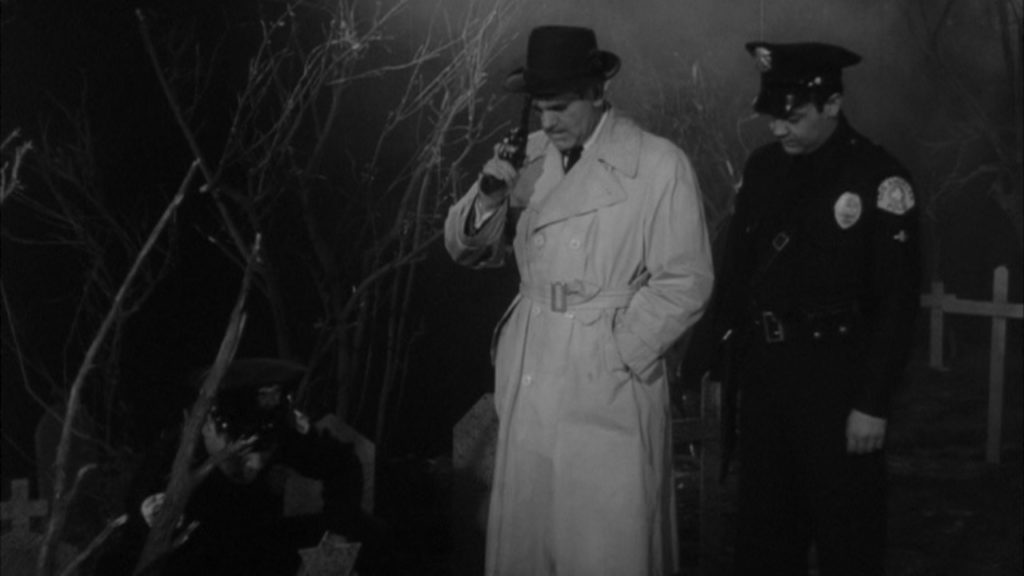
So is this clownishness just the brash, unrealistic theatrics of an amateurish thespian? Unfortunately, no. This March, 2008 article from the London Daily Mail reported that nearly half of all gun-related injuries involving British police officers were due to an officer’s accidental discharge of a weapon, often during training exercises. The article lists examples including a Thames Valley Police firearms officer accidentally shooting a fellow officer while showing off his Glock pistol, not realizing it was loaded; a London-based diplomatic protection officer shooting himself in the leg while getting into a car; and an airport security officer shooting off the top of his thumb while training with his MP5 sub-machine gun. So, officers, be careful out there on the firing range, okay?
Homeland Security Lesson #2: Future Events Will Affect You in the Future
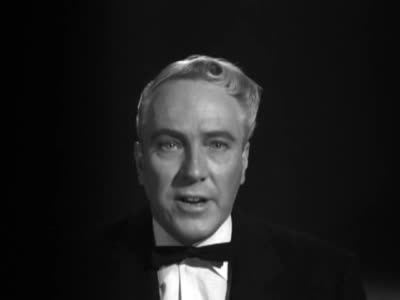
In the immortal words of The Amazing Criswell (psychic Jeron Criswell King, host of Criswell Predicts and part of Ed Wood’s entourage), “We are all interested in the future, for that is where you and I will spend the rest of our lives. And remember, my friends, future events such as these will affect you in the future.” A somewhat pithier commentator, physicist Neils Bohr, was reported to have said, “It is very difficult to predict — especially the future.” Well, just because it’s hard doesn’t excuse us homeland security practitioners from making a good faith effort.
As soon as the Army (or civilian pilots like Jeff) first sighted the flying saucers, military and civilian authorities should have begun a contingency planning process — an assessment of risk. What is risk? The likelihood that a future event will occur, considered in conjunction with the consequence of that event once it has occurred. A common formulation is that Risk = Probability of Threat Event Occurring X Vulnerability of Target X Consequence of Threat Event Occurring. Risk assessments differ depending upon the nature of the threat event: is it unmotivated or motivated? In other words, is your threat vector Mother Nature (or a robot which does not respond to a defender’s inputs but simply carries out preprogrammed instructions — no feedback loop) or an intelligent actor (who may opt to change his attack based on a defender’s actions or barriers encountered)?
Risk assessments for unmotivated threats follow the Probability X Vulnerability X Consequence model. If you have a large enough sample size of prior occurrences, you can calculate an exceedance probability curve, a graph which shows you how likely it is that a new event of a particular type (an earthquake, say) will be at or beyond a certain magnitude (for earthquakes, magnitude on the Richter Scale). If military or governmental analysts were to make the decision that alien incursions do not have intelligent motivation behind them — the incursions are by preprogrammed saucer-shaped robots, say, or the saucers themselves are malignant animals capable of destruction but not intelligent reasoning — AND we make the assumption that the Plan 9 universe experienced all the alien incursions from prior movies of the 1950s, the analysts could set up a chart like the one below. Each film represents an alien incursion, with the magnitude/consequence of the incursions ranked from least to greatest; the cumulative probability, or the likelihood that an event of this magnitude or greater will happen, is listed in parentheses for each:
Invaders From Mars — it’s all a dream, so fuggedaboudit (1.000)
It Came From Outer Space — aliens just want to repair their damaged spaceship; temporarily kidnap a handful of people and impersonate them, later releasing them unharmed (.941)
The Beast with a Million Eyes — an alien lands in a rural hamlet, mind controls a group of animals and humans (.882)
The Man From Planet X — a handful of English folk mentally controlled for a day; threatened invasion of Earth (not carried out) (.824)
Invasion of the Saucer Men — aliens inject a handful of teenagers with alcohol from their fingernails, kill one teenager through alcohol poisoning (.765)
The Thing From Another World — two scientists killed by being drained of blood (.706)
The Monolith Monsters — one man killed, other persons partially petrified, several towns smashed by toppling monoliths (.647)
It Conquers the World — alien turns off all the world’s electrical power, mind controls hundreds, kills two (.588)
The Day the Earth Stood Still — all electric power shut down, all motorized devices stop working, probably results in at least a handful of deaths (not shown) (.529)
This Island Earth — scientific facility incinerated from the air, killing all occupants (.471)
Target Earth — alien robots invade Chicago, causing the city to be evacuated, killing at least a couple of dozen soldiers and civilians (.412)
The Blob — alien organism absorbs the substance of about a hundred people (.353)
The Mysterians — a few hundred deaths from an alien-caused earthquake (.294)
Invasion of the Body Snatchers — aliens impersonate and replace all the inhabitants of a small town, killing them in the process, and spread their plot to surrounding communities (.235)
Earth vs. the Flying Saucers — Flying saucers with death rays attack Washington, London, Paris, and Moscow, likely killing tens of thousands (.176)
The War of the Worlds — alien warships destroy all of Earth’s major cities, presumably killing tens of millions directly, hundreds of millions through secondary effects (.118)
Robot Monster — Ro-Man kills everyone on Earth except for eight survivors, who are immune to his death ray for some reason (.059)
So, if the above list constituted Earth’s prior experience with alien incursions and these incursions were considered as unmotivated events (Mother Nature or robots which do not respond to feedback), then an analyst asked to state the probability of the Plan 9 saucer incursion causing at least one death (or a worse outcome) would list that likelihood at 76.5%. If the threshold were set at a hundred deaths, the predicted likelihood of that number of deaths or worse would be 35.3%, or the likelihood of the deaths of tens of millions, up to the near-extinction of humanity, would be 11.8%. Given those odds, it would certainly behoove the military to put forth a maximum effort to destroy the saucers (more so than launching a handful of ground-to-air missiles and then shrugging their shoulders). However (and this is a big however), our heroes quickly learned that the deadly saucers were guided by active intelligences (not that I’d place Eros, Tarra, and the Ruler too high on the smarts scale, but still). So, pure Risk = Probability X Vulnerability X Consequence estimates no longer apply. The authorities would need to engage in Attacker-Defender analysis. Which leads us into our next Homeland Security Lesson…
Homeland Security Lesson #3: Try to See Events and Situations Through Your Adversary’s Cultural Lens
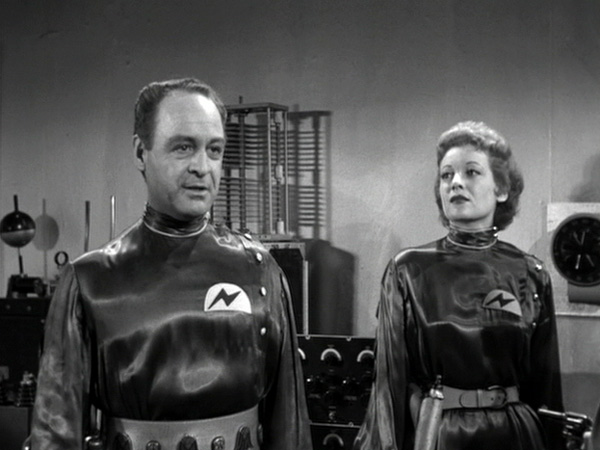
A key element of red teaming analysis (of which Attacker-Defender analysis is one type) is making an honest effort to see through your adversary’s eyes. What are his motivations and goals? What constitutes success in his world? What are his cultural prohibitions and cultural aspirations?
Had the military done this with Eros and crew, they might have avoided much fuss had they sent a different interlocutor (say, Neils Bohr instead of Jeff & co.), then invited Eros and the Ruler out for a pleasant evening in San Francisco, perhaps visits to a leather bar and a transvestite show. Eros might have decided that Earthmen aren’t actually “stupid, stupid!” (apart from Jeff, Paula, Inspector Clay, Lieutenant Harper, etc. etc.) Had the Plan 9 planners gotten to know our better specimens, they would have realized we would never do anything so risky and self-destructive as invent solorbonite. After all, our physicists would never be reckless enough to test a weapon which might result in a chain reaction that would destroy the world…
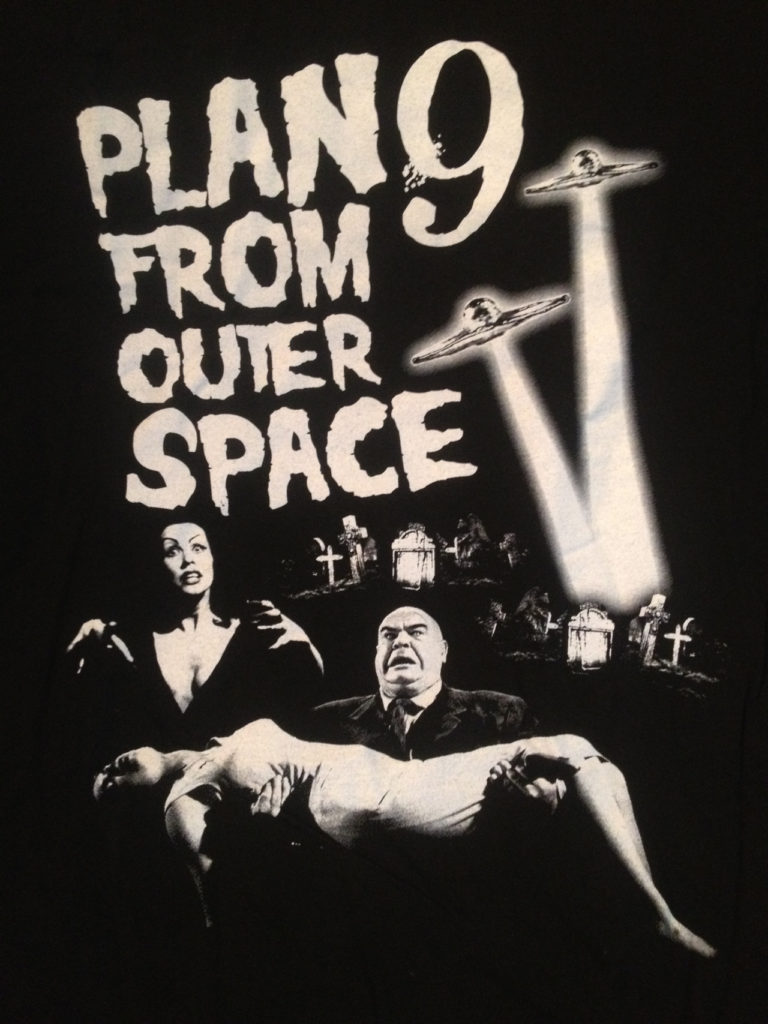
Logo for Homeys on Film: Homeland Security Lessons from Bad Movies
I’ve been working on a Master’s Degree in Homeland Security Studies at the Naval Postgraduate School. One of our assignments is a group project to start a homeland security-related blog. My team’s contribution will be called Homeys on Film: Homeland Security Lessons from Bad Movies. The “business plan” is to provide springboards to discussions of homeland security best practices by snarking on awful examples of policing, intelligence work, civil defense, or international relations from (mostly) bad films. We’ll be providing content ourselves (see one of my recent posts for an example, this one snarking on King Kong vs. Godzilla), and we’ll be inviting our readers to submit content. I think lots of you (especially those of you involved in public safety, public health, or homeland security professions) will have a lot of fun plugging your favorite/least-favorite movies and your homeland security lessons into our simple template.
I’ll be providing more details as I get them. In the meantime, here’s our new logo! (Can anyone guess which movie the image comes from? Hint — it was Bela Lugosi’s last film, and it starred Tor Johnson).
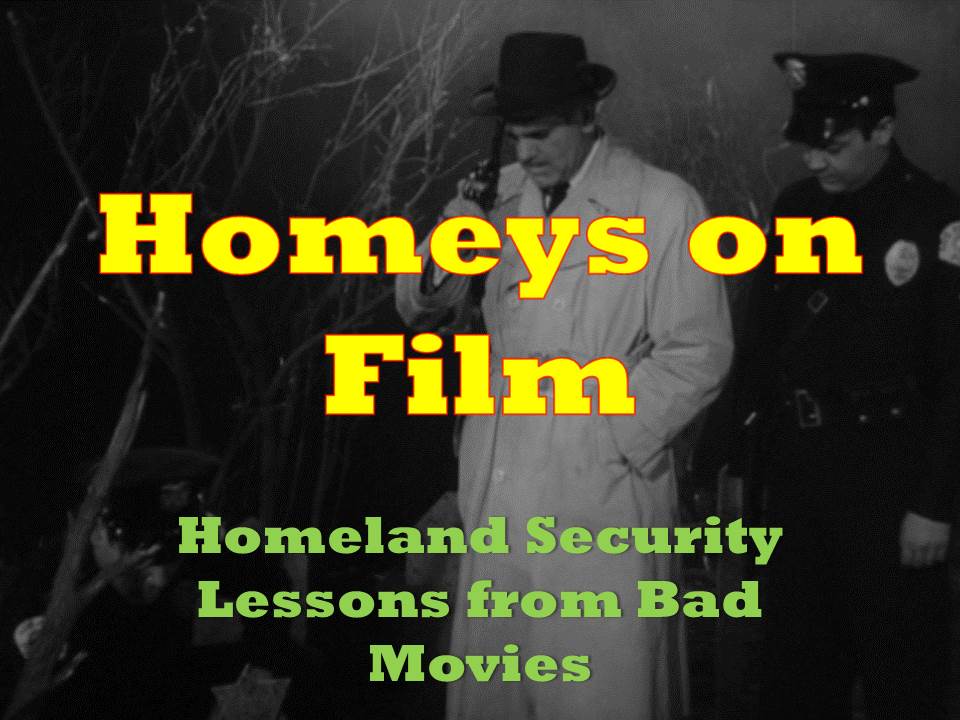
New Story Published: “Youth Will Be Served”

Who knows what lurks beneath those waves, what awaits the swimmers?
I had a story published in the February issue of Nightmare Magazine, “Youth Will Be Served.” It is a dark fantasy set in the Miami Beach of the 1990s, when South Beach’s Art Deco District was on the cusp between decay and revitalization. Both text and audio versions are available online. Please have a look or a listen!




